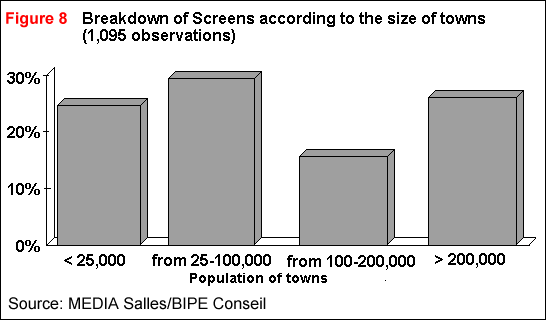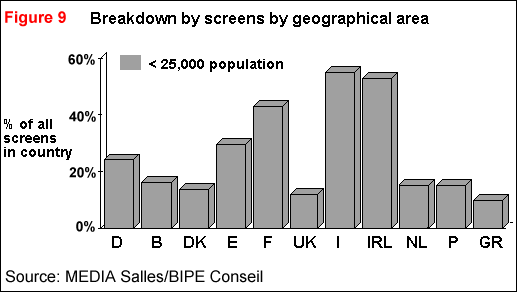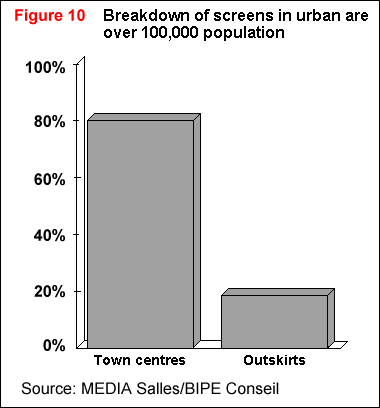



|
|
||||
|
Population:
|
|
|
|
|
| Single screen cinemas |
52.3%
|
13.3%
|
8.4%
|
26.0%
|
| 2 screens |
54.1%
|
13.6%
|
10.3%
|
22.0%
|
| 3 - 5 screens |
46.5%
|
26.6%
|
13.1%
|
13.7%
|
| 6 - 7 screens |
11.2%
|
45.5%
|
16.4%
|
26.9%
|
| More than 8 screens |
0.%
|
5.3%
|
53.3%
|
41.4%
|
| Source: MEDIA Salles/BIPE Conseil | ||||
|
|
|||||||
|
Population:
|
|
|
|
|
|
|
|
| (Average) number of admissions per seat per week |
1.81
|
1.88
|
1.84
|
3.40
|
5.77
|
4.09
|
2.42
|
| Source: MEDIA Salles/BIPE Conseil | |||||||